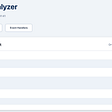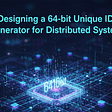
The latest AI news we announced in October
<img src="https://storage.googleapis.com/gweb-uniblog-publish-prod/images/October_AI_Recap_hero_still_1.max-600x600.format-webp.webp">Here are Google’s latest AI updates from October 2025

<img src="https://storage.googleapis.com/gweb-uniblog-publish-prod/images/October_AI_Recap_hero_still_1.max-600x600.format-webp.webp">Here are Google’s latest AI updates from October 2025
Hi HN, I'm Kevin, co-founder of PivotHire AI.We're building a platform to fix what we see as a core problem with freelance sites: clients spend more time managing freelancers than doing their own work.Our approach is an "AI-Managed" abstraction layer. The key architectural decision is that clients and developers do not interact directly. Also, most talents are senior software developers from China that are cheap but high-value.It's an event-driven workflow:- A client sub
I’ve been running AI workloads on a fully unlocked RTX 5080 for the past few weeks. Not overclocked, not spoofed — unlocked.When I bought the 5080, I realized NVIDIA’s driver stack was silently rejecting the new sm_120 (Blackwell) architecture. PyTorch and CUDA would fall back to sm_89, throttling tensor dispatch and compute units. Benchmarks looked great on paper, but real workloads — matrix ops, UNet training, fused kernels — were running at maybe 70 % of what the silicon could actually do.So
I discovered an interesting approach to software distribution while solving a packaging problem: using GitHub Pages infrastructure to host a production APT repository.*The setup:* - GitHub Actions builds .deb packages for multiple distributions - GitHub Releases stores the binary packages - GitHub Pages serves APT repository metadata (Packages, Release files) - Custom domain provides professional presentation - GPG signing ensures package authenticity*What makes this compelling:* - *Zero costs

We use distributed systems every day. Cloud services like Amazon S3, Amazon EKS, and CosmosDB are all distributed systems.

This is a series of posts exploring how to automatically extract software architecture and domain concepts from a codebase to have 100%…

Top diagramming alternatives to Visio for creating architecture diagrams
Table of Contents

Humans and AI work better when we understand more about the complex systems we’re dealing with

Reflection, resilience, and readable intent: how October’s best ideas redefined what it means to design intelligent systems.

Can the architecture of our company’s entire software architecture be a living documenation?

Wouldn’t it be great if you could automatically generate any architecture diagram you wanted from an existing codebase and the diagram was…

In distributed systems, generating unique identifiers is a common challenge. These IDs are used for database records, logs, messages, and…
Practical playbook for low‑latency, failure‑tolerant services.
I’ve been working on this over the past few months after getting frustrated with how fragmented hardware workflows can be - switching between code editors, terminals, and toolchains.Embedr is an AI-native IDE for Arduino and other hardware ecosystems. It helps you code, build, and flash your projects while integrating tightly with the underlying toolchains like the Arduino CLI. The goal is to make hardware development feel as seamless as modern software IDEs.A key feature is the Embedr Agent, wh
I generally frame a problem for the agent and present a few solutions and ask if it can come up with some pros and cons of the solutions. I read the output and make a decision on the best approach based on that output.Then, I'll tell the LLM what I think the best step-by-step approach will be. It may have some tweaks that I'll read and either agree with or say "no let's keep it how I proposed." Then I ask the LLM to execute the first step. It generates code, which I revi
I've launched chess960v2 - a long-term project to run a tournament for the Stockfish engine in Chess960 (Fischer Random) mode.The Core Idea: Stockfish will play against itself across all 960 possible starting positions. The goal is to collect a unique dataset and determine if any initial setups provide a statistically significant advantage against perfect play.Current Status (Test Run):The tournament is already live and running. You can follow the progress on the website: chess960v2.comTo s
CombOS - a bio-inspired distributed operating system demo.<p>50 nodes coordinating without central control Self-healing through quorum consensus <50ms latency, 60fps rendering
Hey HN :)I'm Andrzej, 15 years building distributed systems. Over the past two years, I watched AI change everything about how we work as developers – and most of the discourse was either panic or hype. So I spent that time researching what actually works.The result: "The New Rules" – 16 chapters on navigating the AI era as a developer. Accompanied by a website to help us all get more in-depth into the discussion.Some of the controversial takes inside: * GitHub stars became meanin
If you frequently work on data collection, account management, or automation tasks, CAPTCHA is an unavoidable topic. Those constantly popping up image verifications, rotating CAPTCHAs, and pages requiring you to click "I'm human" are not only time-consuming but also severely disruptive to workflows. For many developers and marketing teams, these verification mechanisms are practically the enemy of efficiency. In this situation, a residential proxy(https://www.thordata.co